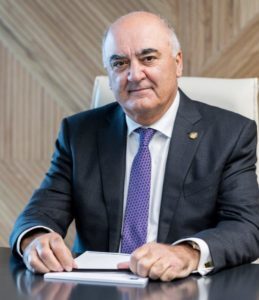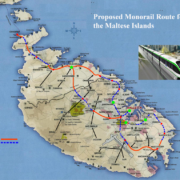Improving our Mobility with a Monorail System

Written by Mr. Angelo Xuereb, Chairman AX Group
I am very pleased that the President of Malta is strongly supporting the idea to introduce a Monorail system to eliminate traffic congestion and ever-increasing emissions in Malta.
I have been promoting the concept of introducing a Monorail system since 1991. At the time, I already considered the traffic problem acute. Now, 30 years later, the problem is becoming more and more severe. Admittedly, significant strides are continuously being made to improve our road network. However, if vehicles continue to increase, we will have no other option but to create more flyovers, traffic junctions, and widening of roads, all to the detriment of our environment and our health.
While I welcome the Government’s call for a study into the introduction of a Monorail, Metro system, it has been dragging on for far too long.
The government would greatly benefit by opening up the discussion to public consultation. I am not against a plan being drawn up by foreign experts, but from my experience, local experts and stakeholders are pricier to the particularities of the problems we face.
Recently, my friend engineer Konrad Xuereb has also been promoting the idea of introducing a Metro system. The least that the Government or its’ consultants can do, is approach us, listen to our views and concerns, then continue with their in-depth studies. These studies will reveal if it is better to opt for a Monorail or Metro system. Most importantly is that we implement a modern, mass transportation system to improve our mobility across the country.
Since my first proposal of 1991, I have continued to extend and improve upon the system over the years. I have published these updated proposals in 1996, 2001, 2013, 2014, 2015, 2016, and 2017. Naturally, the more in-depth the studies conducted, the more refined a concept we can come up with to determine the system, routes, and location of the stations, that would be the least damaging and most cost-effective. This study would also include the best way to split the project into phases.
For clearer context, many consider a Monorail as a Tram travelling on an elevated structure. The meaning of ‘mono’ is ‘single’. Therefore, a single rail system can either be on an elevated structure or a single rail (single continuous concrete beams) that passes through a tunnel.
My proposal is to have a system that makes use of both elevated and tunnel rails. The gradient of the rail should not exceed 10 degrees, which will allow the underground tunnel to pass beneath urban areas and hills, while elevated rails will be erected in rural areas.
For many reasons, the stations and interchange stations, should not be located in the urban core, but in the periphery of the urban areas, so as to provide an integrated public transportation system. It is impossible to have a station in the centre of each of our towns and villages, considering the heritage, space, and incompatible structures. For better efficiency, these stations will still need to integrate Electric Buses, which can be referred to as ‘circular buses’, that make a route around urban areas and transport commuters directly to the nearest station.
It is imperative that there be frequent bus stops, to encourage commuters to walk to their nearest bus stop, for not more than 10 minutes, rather than use their personal car.
The attached Monorail system proposed plan is feasible and has more advantages than a complete underground Metro system.
It will also offer a pleasant route to view our rural areas when passing over on elevated routes. Furthermore, elevated routes are much cheaper to construct than underground and make it more possible to avoid disturbing underground freshwater springs and galleries, in rural areas.
It may take over a 10-year period to complete the entire system from the final approval of the master plan. Therefore, it is a must that the project is developed in phases. The first phase should target the most congested urban areas around the inner and outer harbour areas. When towns and cities like Valletta, Cottonera, Marsa, Hamrun, Msida, Sliema, and Gzira areas were developed, these were never designed for car parking and in fact, provide minimal or no private garages. To make matters worse, these areas feature high population density and narrow streets.
Once this initial stage is implemented, it will be easier to carry out extensions to the grid over the subsequent phases. The second priority is to extend to the Airport, Paceville, St. Paul’s Bay, and Marsascala areas. Over time, the Government will decide on the priorities that extend to Cirkewwa.
It is of utmost importance that when a master plan is proposed, it has to be approved by all political parties in Parliament. This is a long-term project that cannot be halted after a new party is elected to Government.
Government should seriously take up the introduction of this modern and environmentally friendly integrated public transportation system with urgency. Time is crucial considering our ever-increasing traffic and environmental issues.

